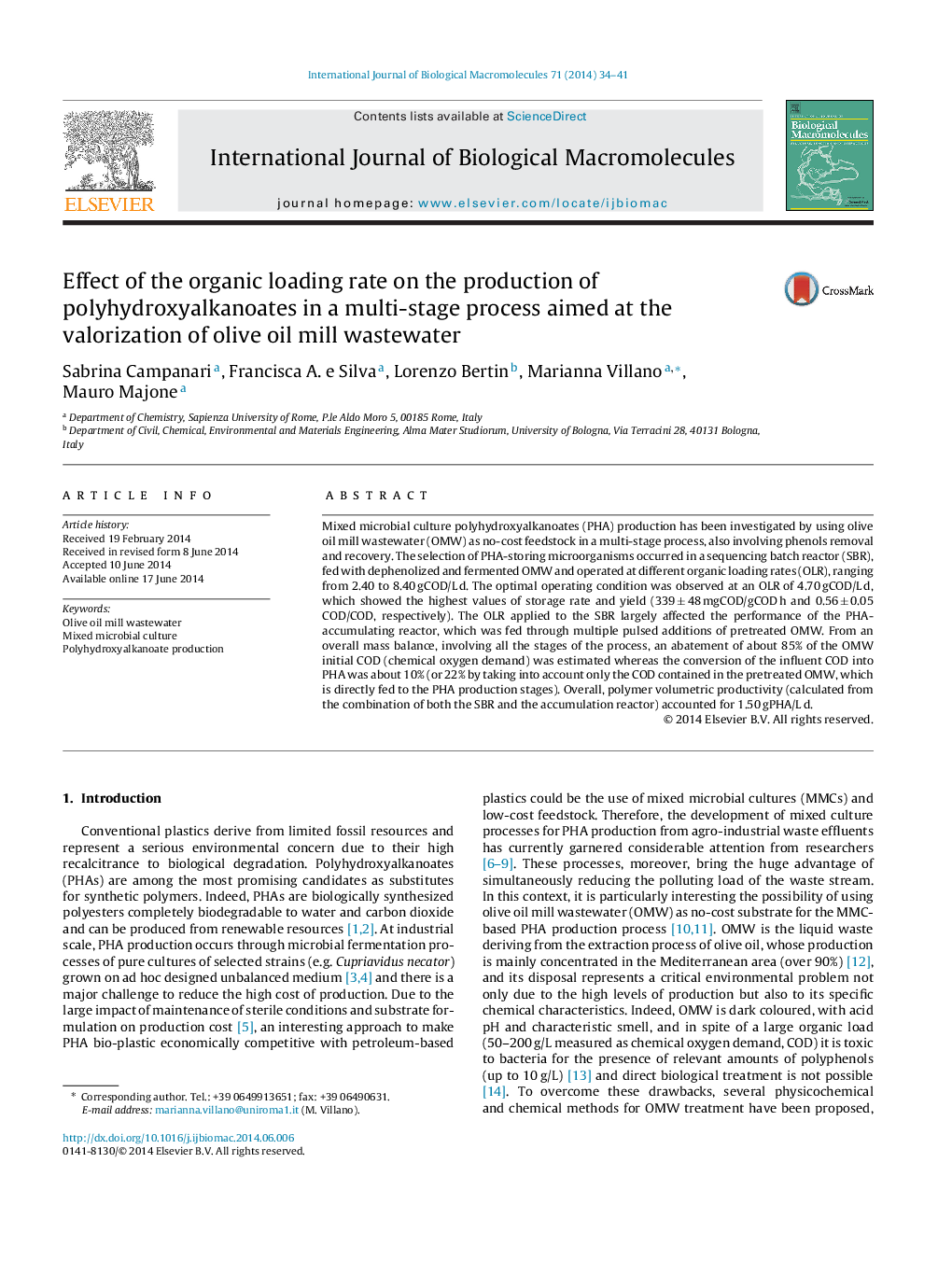| Article ID | Journal | Published Year | Pages | File Type |
|---|---|---|---|---|
| 1986443 | International Journal of Biological Macromolecules | 2014 | 8 Pages |
Mixed microbial culture polyhydroxyalkanoates (PHA) production has been investigated by using olive oil mill wastewater (OMW) as no-cost feedstock in a multi-stage process, also involving phenols removal and recovery. The selection of PHA-storing microorganisms occurred in a sequencing batch reactor (SBR), fed with dephenolized and fermented OMW and operated at different organic loading rates (OLR), ranging from 2.40 to 8.40 gCOD/L d. The optimal operating condition was observed at an OLR of 4.70 gCOD/L d, which showed the highest values of storage rate and yield (339 ± 48 mgCOD/gCOD h and 0.56 ± 0.05 COD/COD, respectively). The OLR applied to the SBR largely affected the performance of the PHA-accumulating reactor, which was fed through multiple pulsed additions of pretreated OMW. From an overall mass balance, involving all the stages of the process, an abatement of about 85% of the OMW initial COD (chemical oxygen demand) was estimated whereas the conversion of the influent COD into PHA was about 10% (or 22% by taking into account only the COD contained in the pretreated OMW, which is directly fed to the PHA production stages). Overall, polymer volumetric productivity (calculated from the combination of both the SBR and the accumulation reactor) accounted for 1.50 gPHA/L d.
